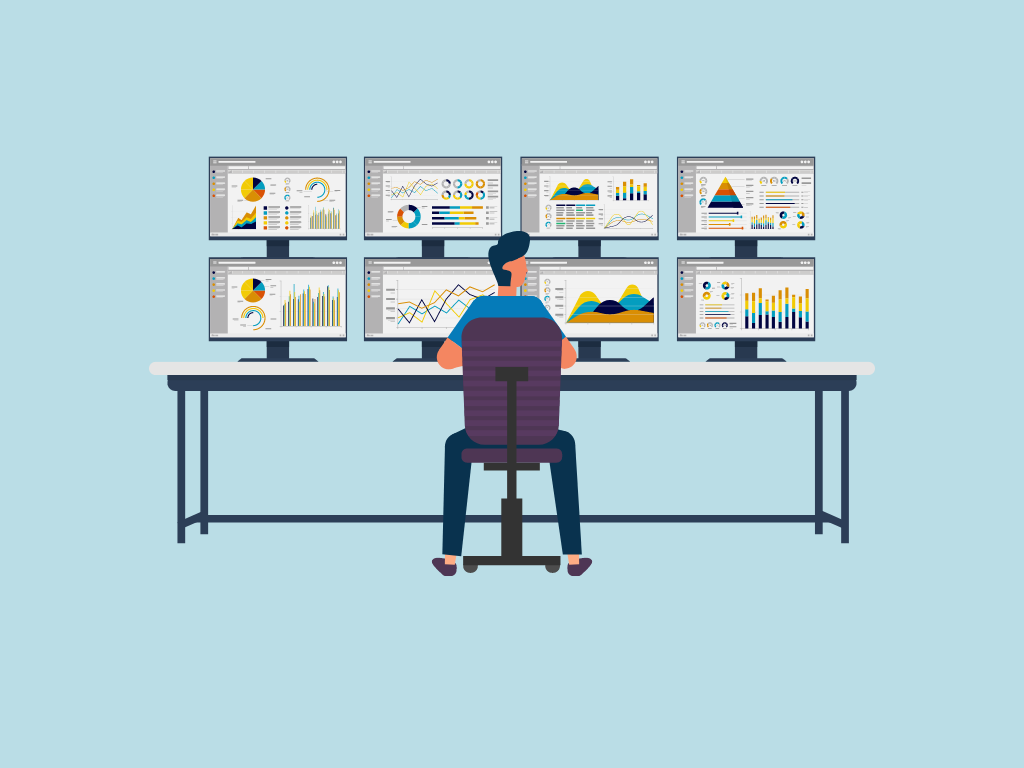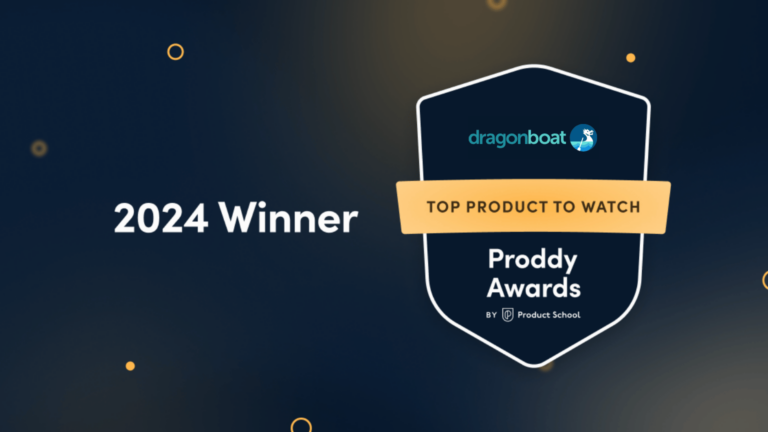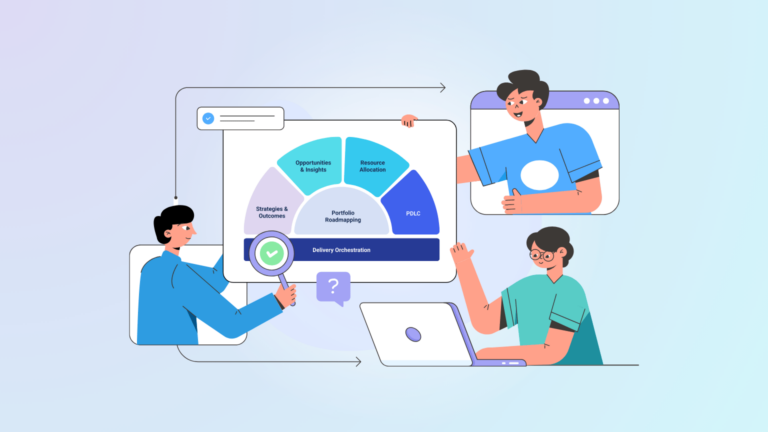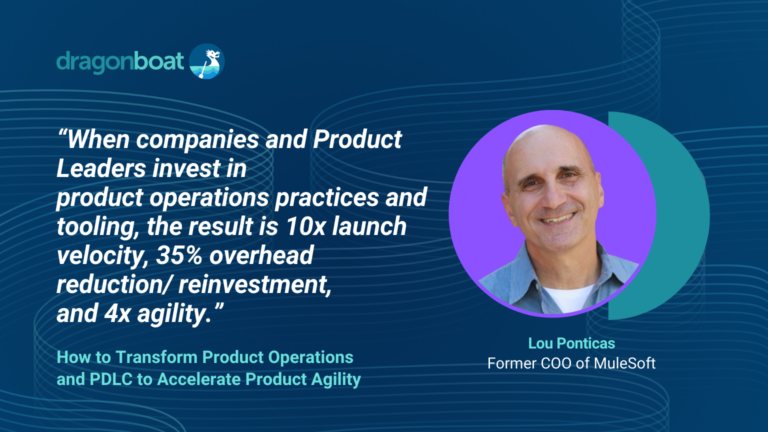Product roadmaps are essential for communicating plans and gaining alignment. But, when presenting to stakeholders with different needs, choosing the proper format for each audience is vital. Below, we share five popular and effective product roadmap templates with tips on when to use them. But before we dive in, let’s sync up on the purpose of the product roadmap and what to look for in a template.
What Is a Product Roadmap, and How Is It Used?
A product roadmap is a visual representation of your product strategy that shows what your development teams plan to do, when they will do it, and why. Product managers use roadmaps to communicate with stakeholders across the organization. For instance, you might share roadmaps with customers to provide visibility into your progress on specific features. But you might also share them with executives who need a high-level overview of how your efforts support the company’s business goals.
In today’s dynamic business environment, most product roadmaps are constantly in flux to support an agile product development process. When this is the case, building static plans in slide decks or spreadsheets and updating them each quarter isn’t enough.
Instead, we keep our data in a collaboration tool with built-in product roadmap templates to quickly update plans in response to changing conditions. In other words, you can reorganize and show the same data in multiple ways with less effort.
What Are the Steps to Building a Product Roadmap?
The steps involved in building a product roadmap are relatively simple. For example, here is the process many teams follow:
- Establish your overall company objectives and product goals.
- Determine which product initiatives to prioritize in pursuit of those goals.
- Break each initiative down into the actions you must take to deliver – features you will develop, the documentation you will create, and so on.
- Determine the timeline – what will happen and when given your priorities and available resources.
The challenge, of course, is that product roadmaps cannot exist in a vacuum. You must collaborate with your executives and other functions in your organization to build a plan that everyone agrees on. That will take some negotiating.
The right tool makes this easier. For instance, Dragonboat’s product roadmap templates include the ability to compare your plans to your available resources. That allows you to see what is possible and prioritize.
Choosing a Product Roadmap Template
When choosing a template, consider who you plan to share the information with and what they need to see. For example, ask yourself the following questions:
- What do you hope to achieve by sharing this information?
Are you trying to convince team members you need more resources? Does a key executive require information to present at a board meeting? Or are you trying to arm sales with insights they can share with customers? - How much detail is necessary?
Providing too much or too little information will make your communications less effective, so consider what your target audience will need to achieve their goal. Do they need insight into every product feature you plan to release in the coming year, and who will do the work? Or, can you limit the scope to a specific problem they wish to solve? - What is the appropriate timeframe?
Does your target audience need to know what will happen each quarter? Are they looking for a high-level overview of your plans for the next three years? Or is the timeframe irrelevant?
Answering these questions will help you decide which product roadmap template suits you.
Five Product Roadmap Templates
Although there are many types of roadmaps for different needs, we would like to highlight five of our favorites here.
1. Lean Roadmap
What Is a Lean Roadmap?
A lean roadmap, sometimes called a “fuzzy timeline,” provides an overview of the problems you can and should solve to achieve your product vision and business goals without an exact outline of what your team will deliver and when.
The Now-Next-Later Lean Roadmap template focuses on time horizons over timelines by using three buckets to communicate and align teams on the upcoming challenges, opportunities, and issues:
- Now: Initiatives and ideas in the Now Bucket are underway and well-defined in terms of details and scope.
- Next: The Next Bucket contains initiatives and ideas your team is preparing to work on. These initiatives are often in the discovery or planning phase.
- Later: Initiatives and ideas in the Later Bucket are problems you foresee but still need to define and schedule.

When to Use a Lean Roadmap
Product teams can use lean roadmap formats like Now-Next-Later (or variations) to organize initiatives that best drive product outcomes. Agile teams can also use this format as it is similar to an agile roadmap template.
Since this roadmap format communicates priorities over broad timeframes, it’s an excellent choice for teams that must share what is on the horizon while keeping release dates flexible. For instance, this would be a good option for sharing with sales or external stakeholders, like customers.
2. Outcome-Based Roadmap
What Is an Outcome-Based Roadmap?
An outcome-based roadmap gives context to roadmap items and their prioritization. This type of roadmapping focuses not only on the “what” (outputs) but also the “why” (outcomes). It empowers teams to align toward top-level objectives typically set in annual or quarterly planning sessions.
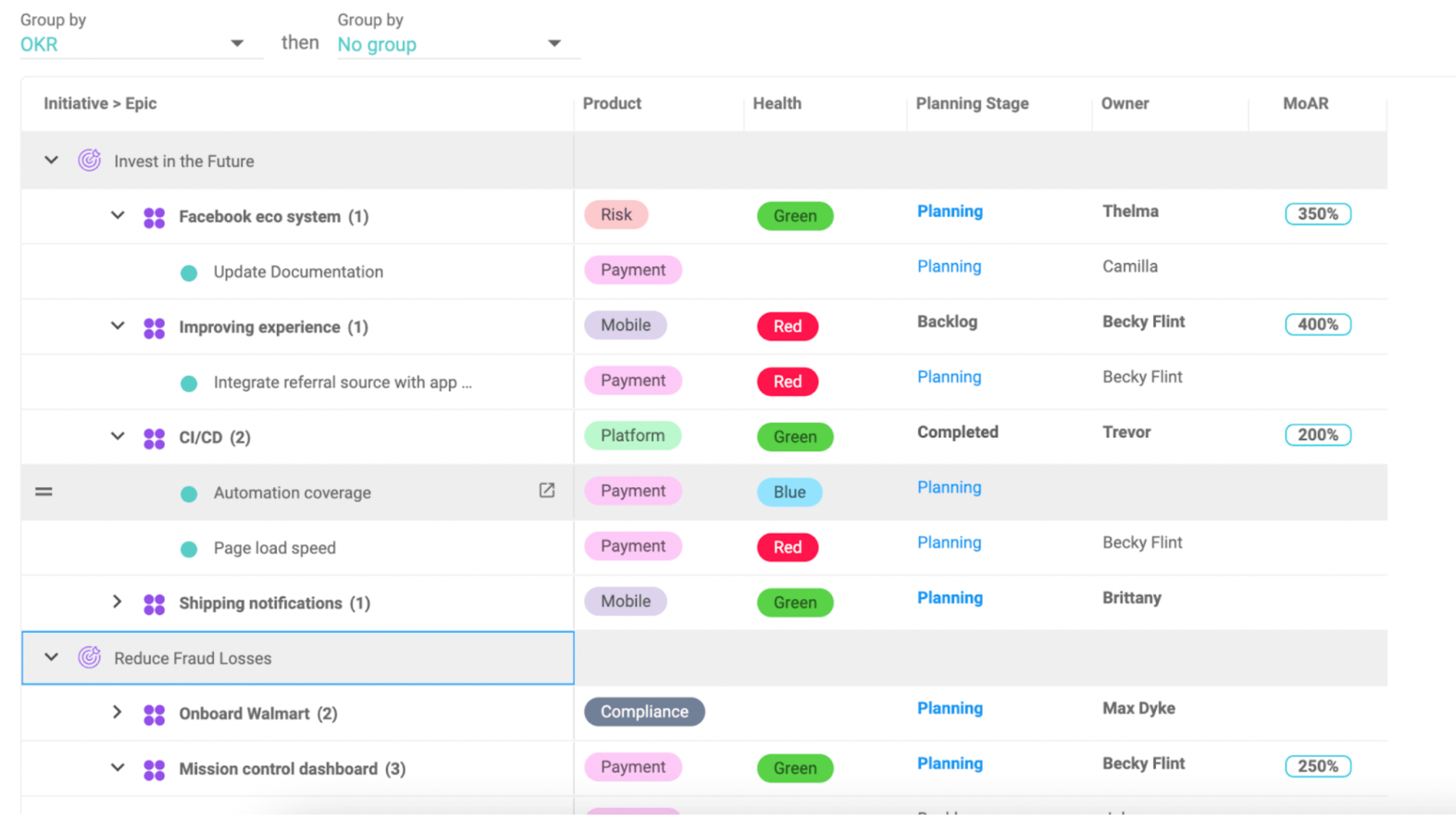
When to Use an Outcome-Based Roadmap
Product teams use outcome-based roadmaps to connect product initiatives and features with product or business goals. That helps them focus on delivering products customers love while driving business outcomes instead of narrowly focusing on a list of deliverables. It also makes it a great choice for communicating with your executive team.
Check out our Step-by-Step Guide for Outcome-Based Roadmapping for more detail.
3. Release (Rollup) Roadmap
What Is a Release Roadmap?
A release roadmap outlines the improvements, features, and fixes you plan to include in upcoming release cycles. Release roadmap templates can span a few months or break information into shorter 2-week sprints.
Product teams use release roadmaps to plan feature and product releases across upcoming time horizons and prioritize based on impact, effort, and benefit. With a release roadmap, product teams can also easily view and manage timelines and progress.

When to Use a Release Roadmap
A release roadmap is a great way to plan upcoming releases. You can link features and stories in a sprint to show how each item relates to the overarching objectives and provide an overview of the company’s strategic direction to engineering teams. You can also use it to ensure alignment across multiple departments. For example, you might share a release roadmap with your marketing team to coordinate efforts.
4. Quarterly Roadmap
What Is a Quarterly Roadmap?
Certain goals like retention and market expansion are almost always present in a business but can fluctuate depending on the time of year, business goals, and other external factors. Planning quarterly helps companies better align their product planning with the changing needs of the business, customers, and market.
Quarterly product roadmap templates allow teams to focus on the company’s needs at a particular time – highlighting how execution will occur each quarter.
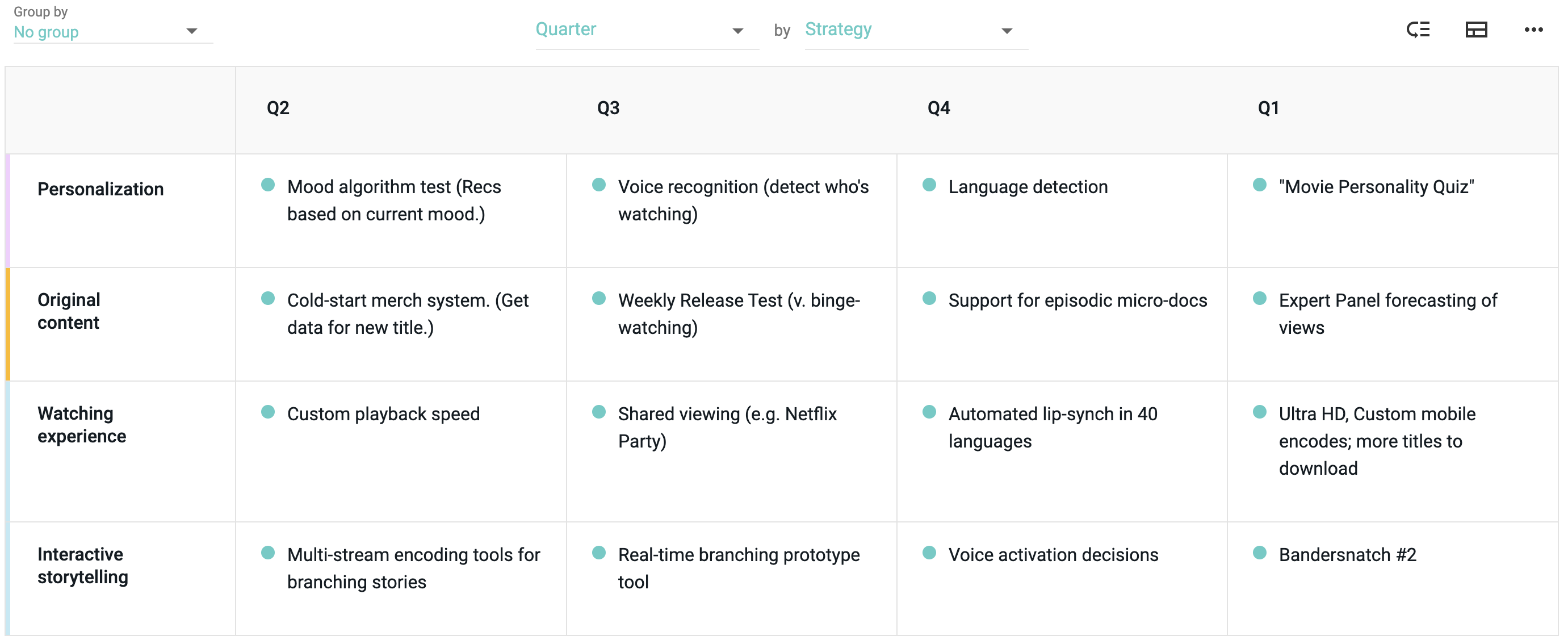
When to Use a Quarterly Roadmap
Product teams often perform quarterly or bi-monthly planning and build quarterly roadmaps to coordinate release plans and execution across teams. You can organize quarterly roadmaps by goals or product areas, starting at the initiative level for cross-team alignment and then breaking down to epic or lower during release planning.
Check out our Step-by-Step Guide for Performing Quarterly Planning with Dragonboat.
5. Team Roadmap
What Is a Team Roadmap?
A team roadmap is a way to visualize the initiatives and epics specific to your teams, such as product, marketing, customer success, or sales. Within a team roadmap, there may also be sub-roadmaps. For example, a product team may also have sub-roadmaps to include each specific product team under that umbrella.
When to Use a Team Roadmap
Use a team roadmap for better visibility into the progress of initiatives and epics specific to your team and their contribution to overarching business objectives.
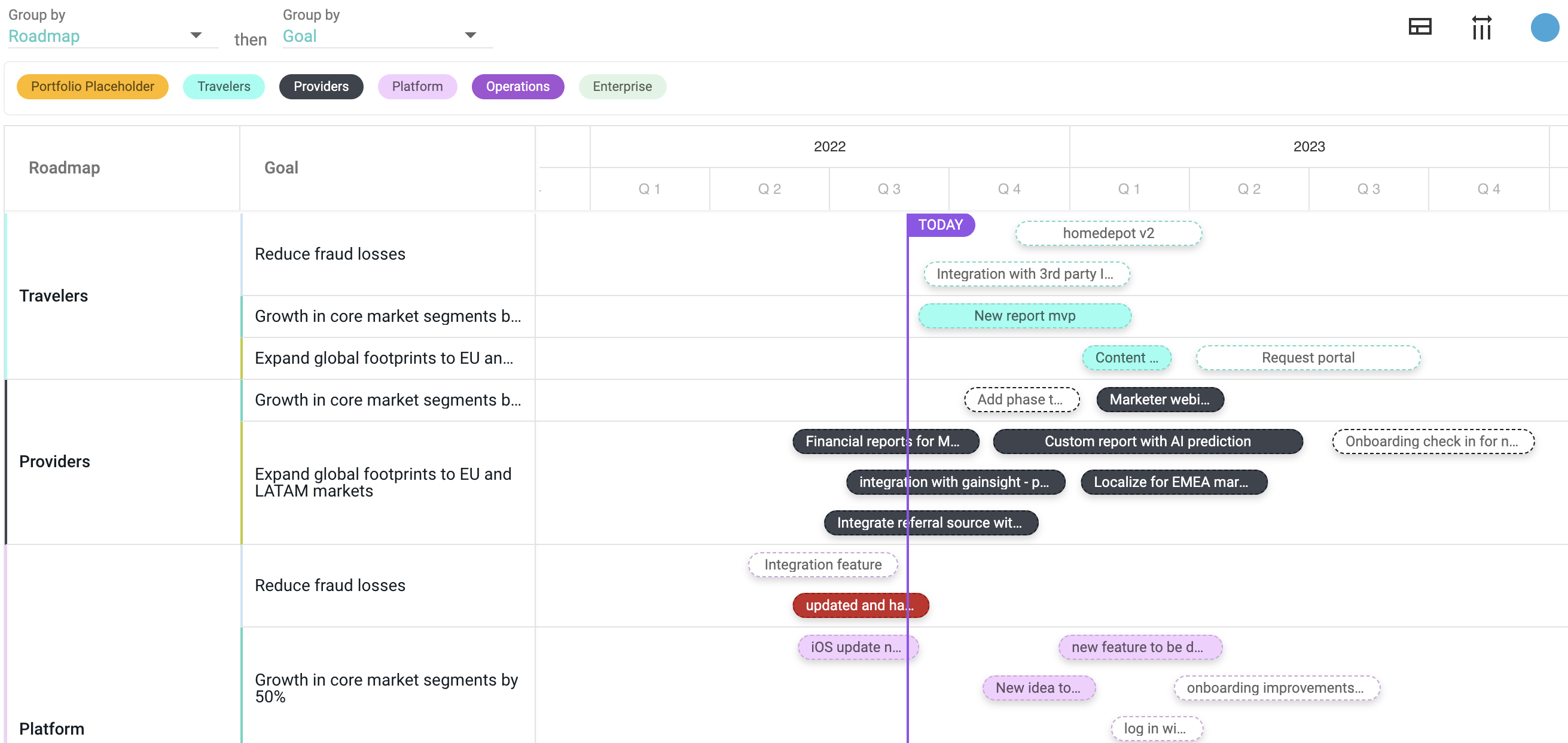
How to Communicate Your Roadmap
After selecting the appropriate product roadmap template and populating it with key data, the next step is to share it with your audience and communicate with regular updates.
Roadmap is a living document that’s useful only with the right update to date data. A purpose-built tool like Dragonboat makes this key product manager deliverable streamlined with real-time data and automated / scheduled update directly from Dragonboat – keeping teams aligned and stakeholders informed.
Need more roadmap inspirations in Dragonboat? Visit our Step-by-Step Guide to Creating 10 Common Roadmap Formats with Real-time Data for detailed instructions for these templates and more.
